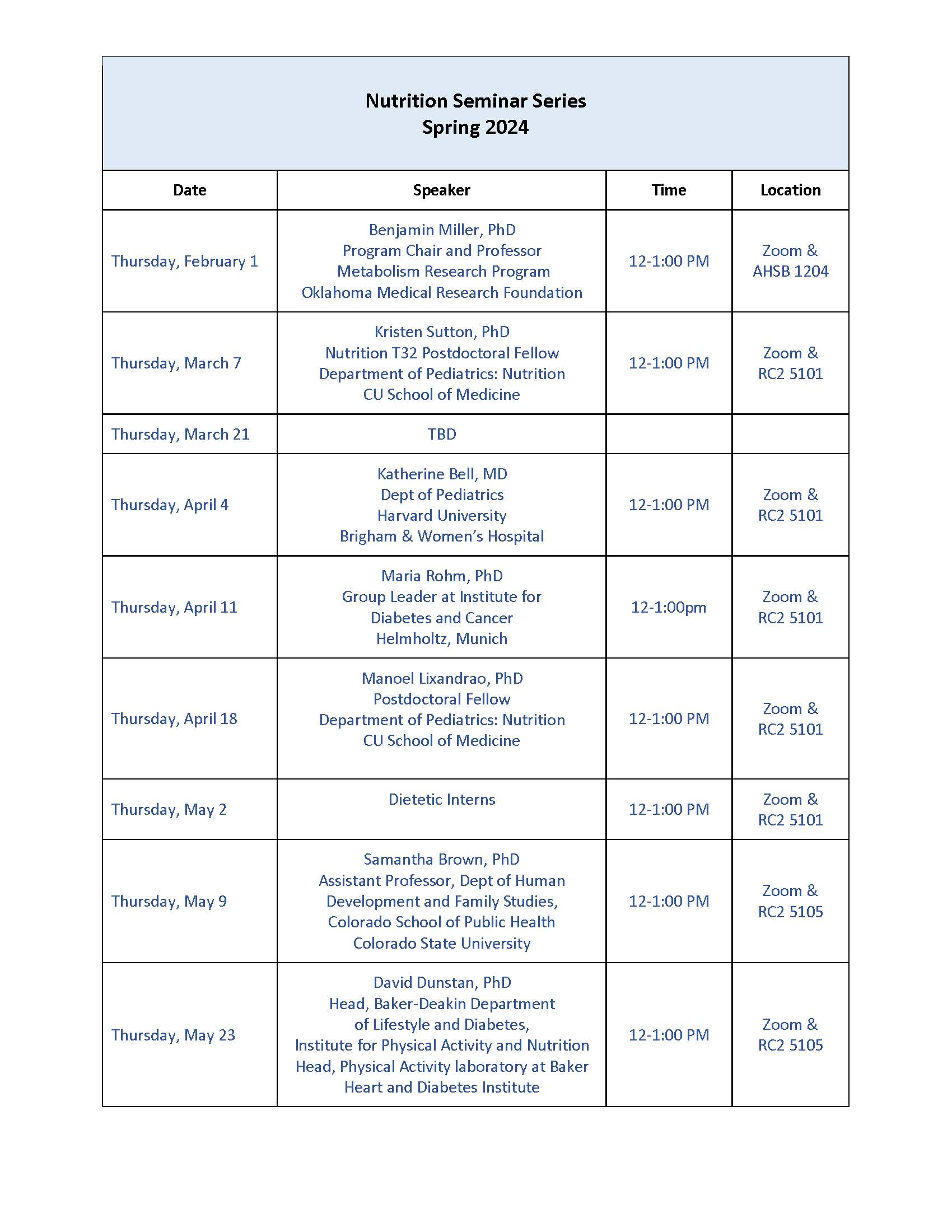Welcome to Nutrition

The mission of the Section of Pediatric Nutrition is to enhance the health of all infants and children through research and the promotion of best practices for nutrition and physical activity in health and disease.
Our academic mission includes research, clinical care, education and training, and community outreach.
Highlights & News
Noel Mueller, PhD, has been appointed to Associate Professor in the Colorado School of Public Health, effective April 1, 2024
Ihuoma Eneli, MD, MS Co-chair - Medications and Obesity Exploring the Landscape and Advancing Comprehensive Care A Workshop | National Academies, Washington, DC, March 19-20th.
Suzanne Paul, DNP, FNP-C, and Amy Bartoshesky, MSN, FNP-BC, presented “A New Era in Weight Management: Anti-Obesity Medications for Adolescents” at the NAP NAP (National Association of Pediatric Nurse Practitioners) conference in Denver, Colorado, on March 13, 2024.
Minghua Tang, PhD, gave a talk, “Pathway to Optimal Nutrition Across the Lifespan,” to the USDA Children’s Nutrition Center in Little Rock, Arkansas on March, 6, 2024.
Darleen Sandoval, PhD, Keynote Speaker, "Bariatric surgery: An integrative physiological approach to obesity treatment". Rising Starts Symposium, Diabetes and Obesity Research Priority Area, University of Kentucky, Lexington, KY, Dec 2023
Nancy F. Krebs, MD, MS, and Kartik Shankar, PhD, Invited Participants, "The Double Burden of Heat Stress and Maternal Malnutrition on Newborn Vulnerability.” Webinar, NIH Climate Change and Health Initiative Seminar Series, December 7, 2023
